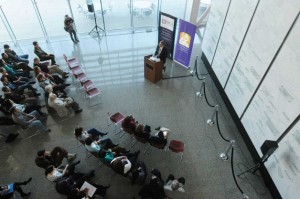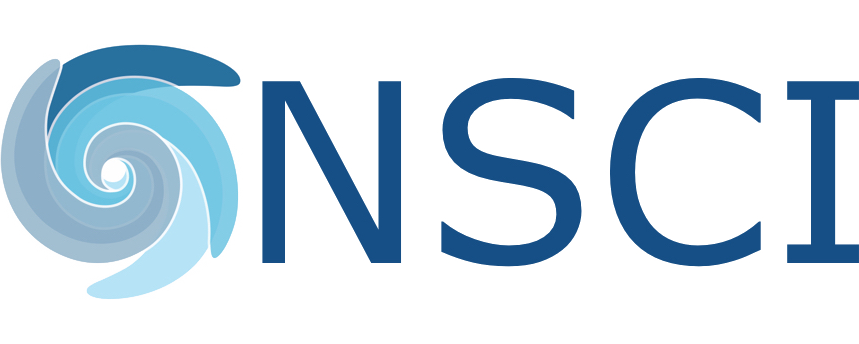In December 2012, New York State awarded Dr.Sally Temple, Dr.Jeff Stern, and the Neural Stem Cell Institute $10.6 million for the preclinical development of a treatment for age-related macular degeneration using retinal stem cells. She and her group have created a specialized RPE stem cell (retinal pigmented epithelial) for transplantation behind the retina to potentially restore vision in those with age-related macular degeneration. In 2013 Dr. Richard Davis and Michael Naimark joined the newly formed Retinal Stem Cell Consortium to help forward it’s mission.

Before joining the group, Richard Davis, Director of Retinal Research, started his research studying pediatric solid tumors. “My entry point into (studying) disease was really at the genetic level. I was really interested in the relationship between changes in gene structure and changes in cell behavior. I got my start in a lab basically looking at these phenomena.”
Richard says his incentive to join the Retinal Stem Cell Consortium was practical. “As a graduate student, I was interested in the structural determinants (of cell disease) and not so much with the mechanisms that were governing that within the cell. As time went on, I began to shift my interest to the cell, what the cell was actually doing and then, I became practical. I became interested in translational medicine and this was to use some of the skills I had gained to try to find cures for disease. Part of what excited me most about starting here was being able to get as close as I could to fulfilling the dream that you could actually go from identifying a mutation to having a cure for a patient.” A biomedical researcher for over 20 years, Richard shares his disappointment with the phrase, ‘this will lead to a cure’ as the constant refrain in research. He explains, “We’ve found many, many genes, but there are not many, many cures. So, when I found this opportunity, I really jumped on it, because this is the next logical step, taking a project to clinical trials. It feels like I have been riding a wave and the wave consists of new technologies and new opportunities that are being taken advantage of to actually do something for people. While in the past I was interested in the mechanisms behind things, I gradually became more excited about the possibility of finding practical solutions.”
Richard’s main role in the project is as a facilitator. He says, “What I do is move projects from one point to the other. I have the ability to organize things and I enjoy organizing things and I like to do it in a very stepwise and systematic manner. I see my role as helping people actually do the work to take advantage of their skills and understanding to move the project along.” Dr. Davis connects the dots.
In an adjacent room, Consortium Project Manager, Michael Naimark says that it is not a coincidence that their offices near one another, “Richard really understand what’s going on with the nuts and bolts science that’s taking place. I have a scientific background, but in the last dozen years or so have found myself mainly being a study director focused on project oversight and regulatory compliance. I’m used to running large projects with a lot of different people in a lot of different locations and keeping track of things; making sure everyone knows what the other people are doing and that the stakeholders are aware of what they need to be waiting for and what they need to be responding to and that’s become my primary goal here.” Naimark explains, “Can we do this project in the time allotted in such a way that the FDA will look at what comes out of our work and say this is done to an acceptable standard of quality?”
With a team of 13 researchers at NSCI and 4 external collaborating groups, the Retinal Stem Cell Consortium is aiming towards preclinical trials. Naimark explains, “Preclinical trials will come after we’ve established the baselines of what our cell does and how our cell reacts.” The cells that are being developed are retinal pigmented epithelial cells that will be transplanted into patients who have dry age related macular degeneration to regrow tissue and restore vision. Naimark underscores the significance of the study, “Currently there is no FDA-approved therapy for dry AMD. There are some other people doing similar things, who are ahead of us.” Naimark thinks our cells will be more effective and safer for transplantation. “These RPE cells, if you harvest them and your treat them just right, a tiny sub-population of these cells has the ability to repopulate. That’s what makes it so interesting. Instead of going to a cell that can turn into anything, we are going to a cell that is already what we want it to be and telling it to make more of itself.” He says the stem cell-derived RPE cells may have a better profile than something that is derived from an embryonic stem cell or induced pluripotent stem cell because these other stem cell types could potentially move in a lot of different directions while the RPE cell being developed here won’t move in as many directions.
Richard Davis elaborates, “We activate adult stem cells from donated eye tissue. These stem cells are poised to become RPE cells and do so effectively and give rise to mature RPE cells which may be more closely related to the native cell” He emphasizes, “You see the clinical value of what you are doing for people.”
Naimark enthusiastically adds, “And, we’re very fortunate to be located where we are geographically because it gives us access to specialized expertise which we might not have access to otherwise. This can potentially affect a huge swath of people.” And, he underscores the potential significance of a therapeutic as there are 30 -50 million cases of age related macular degeneration worldwide and 5 million new cases diagnosed annually.

Leave a Reply